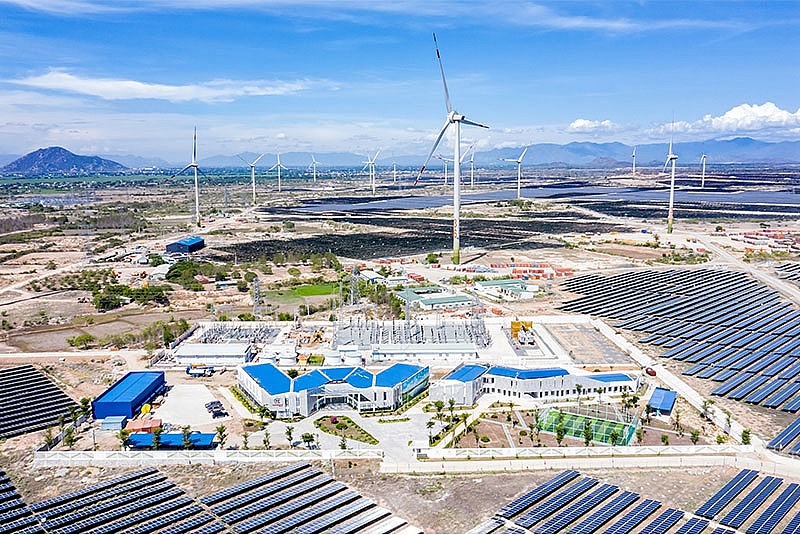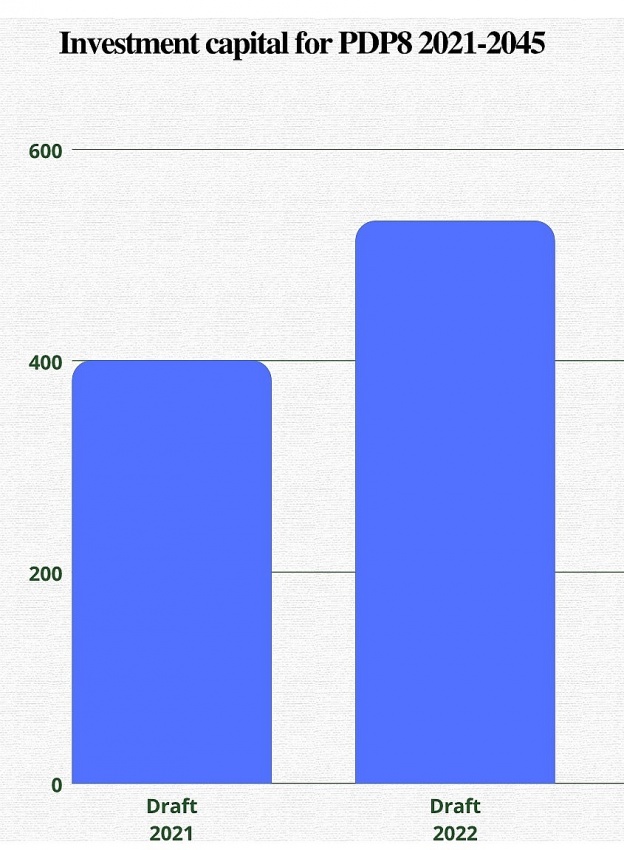Investors call for bankable PPA and reasonable price policies for energy projects
 |
| Renewable energy sources are expected to be the main contributor to the electrical energy structure. Source: Trung Nam Group |
Ha noted that its Hai Lang Power Center project could face obstacles with international lenders on projects with nonbankable PPAs.
With an investment of $2.37 billion, the Hai Lang project is financed by a consortium of T&T Group, Korea Gas Corporation, Hanwha Energy Corporation, and Korea Southern Power.
However, the new Public-Private Partnership (PPP) Law that took effect on January 1, 2021, does not expressly include a government guarantee to investors which makes such preparation unattractive.
Ha added that the template PPA no longer obliges Electricity of Vietnam (EVN) to contractually agree to purchase the entire yield generated from projects, making it difficult to demonstrate the effectiveness of investment projects to lenders due to the perceived risks.
“We need a PPA that corresponds to international standards. Foreign lenders will charge lower costs and more favourable terms than local ones, however, they will always look at the market size, potential profits, and risks,” Ha said.
As one of the largest companies in the renewable energy sector and the first private investor to build and run a transformer station, Trung Nam Group confirmed that Vietnam's electricity market was attractive enough, however, the desire for low risk and high return created obstacles for investors.
Le Nhu Phuoc An, deputy general director of Trung Nam Group said, “Foreign investors expect a clear and predictable policy that helps them manage their capital flows.”
In terms of the off-take obligation in PPA, An said that investors were afraid of having to cut capacity. The model PPA has not addressed scenarios in which the power plant is unable to generate energy because the grid is unable to accept it. Over the last 18 months, both solar and wind projects have had to cut capacity due to oversupply and other grid issues.
An noted, “Capacity cuts are an unpredictable risk that directly affects the financial plans of projects,” suggesting that the model PPA should be comparable with similar markets to ensure benefits for both the seller and the buyer.
At the second Vietnam Clean Energy Forum on April 7, Pham Thi Thanh Tung, deputy director of the Credit Department under the State Bank of Vietnam said, “it should revise the PPA to remove the regulation for stopping purchasing power.”
Bui Xuan Hoi, an energy economist and rector of the Northern Electricity College mentioned the price policy by saying, “Electricity price is a decisive factor for an investor to consider. Thanks to the feed-in tariff mechanism for solar and wind, Vietnam lured tens of billions of dollars of investment from both foreign and local investors.
“It will not be possible to attract investment in the electricity sector without an attractive electricity price mechanism,” he stressed.
In order to support economic development after the pandemic, EVN has stated that no electricity price increases will be implemented this year.
 |
| Total investment capital for the source-power grid in the 2021-2045 period is about $532 billion according to the draft Power Master Plan VIII (Source: Institute of Energy) |
Vietnam’s electricity demand is forecast to increase at a high rate over the coming years with 8.5 per cent per year for the 2021-2030 period. Commercial electricity consumption is expected to increase from 216 billion kWh this year, to more than 300 billion kWh in 2030, and more than 800 billion kWh in 2045.
According to the Institute of Energy, to achieve the goal of net-zero by 2050, renewable energy sources are likely to be the main contributor to the electrical energy structure with 32 per cent by 2030 and 58 per cent by 2045.
What the stars mean:
★ Poor ★ ★ Promising ★★★ Good ★★★★ Very good ★★★★★ Exceptional
 Tag:
Tag:
Related Contents
Latest News
More News
- Ho Chi Minh City hits $8.37 billion in FDI (December 29, 2025 | 08:28)
- Tax sector wraps up 2025 and sets priorities for next year (December 25, 2025 | 14:00)
- Heavy industries set for pilot greenhouse gas quotas (December 25, 2025 | 10:00)
- $250 million deal targets women-owned SMEs, sustainable agriculture (December 22, 2025 | 17:40)
- UOB sees Vietnam growth easing in fourth quarter (December 22, 2025 | 17:39)
- Government moves to establish International Financial Centre (December 21, 2025 | 21:00)
- Vietnam's IFC to target global investment flows (December 21, 2025 | 18:00)
- Ha Tinh breaks ground on major Vingroup industrial and energy projects (December 19, 2025 | 18:24)
- EVN launches major power infrastructure projects nationwide (December 19, 2025 | 18:17)
- VAL inaugurates second production line to meet domestic animal feed demand (December 19, 2025 | 16:37)























 Mobile Version
Mobile Version